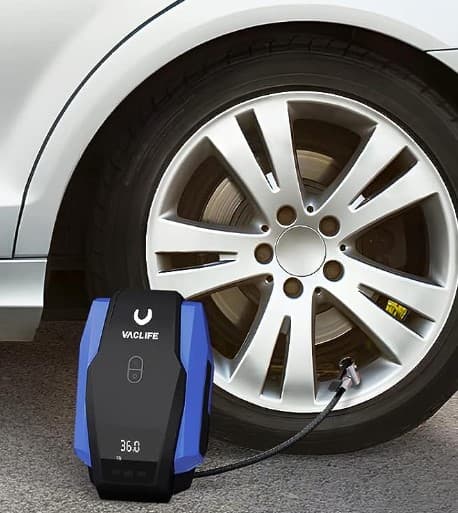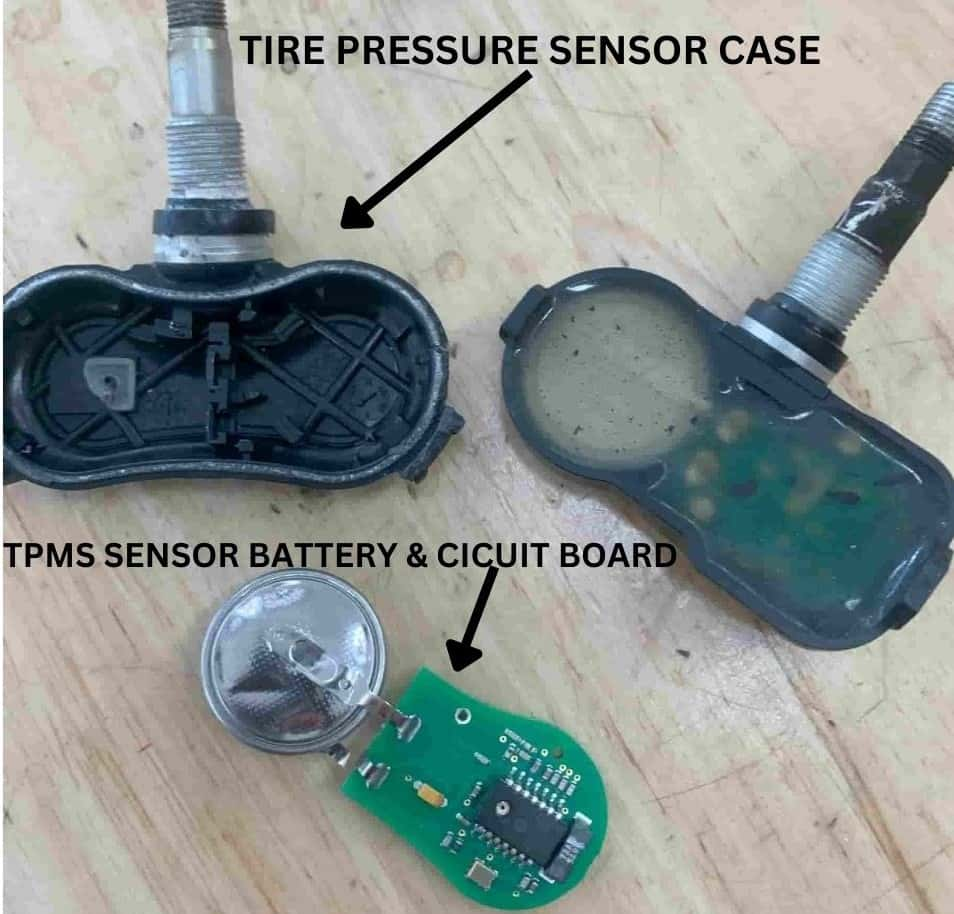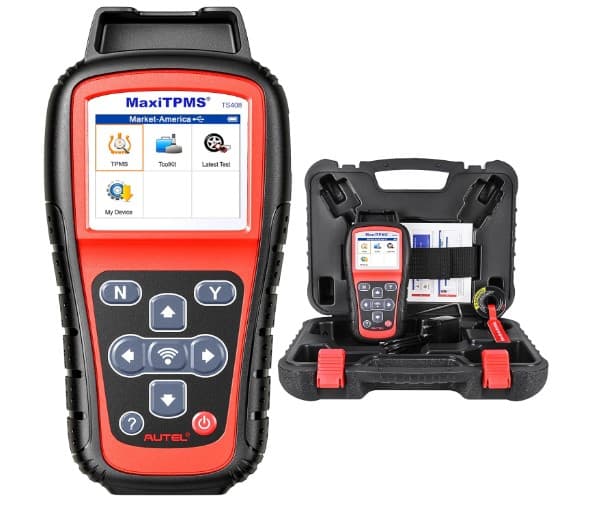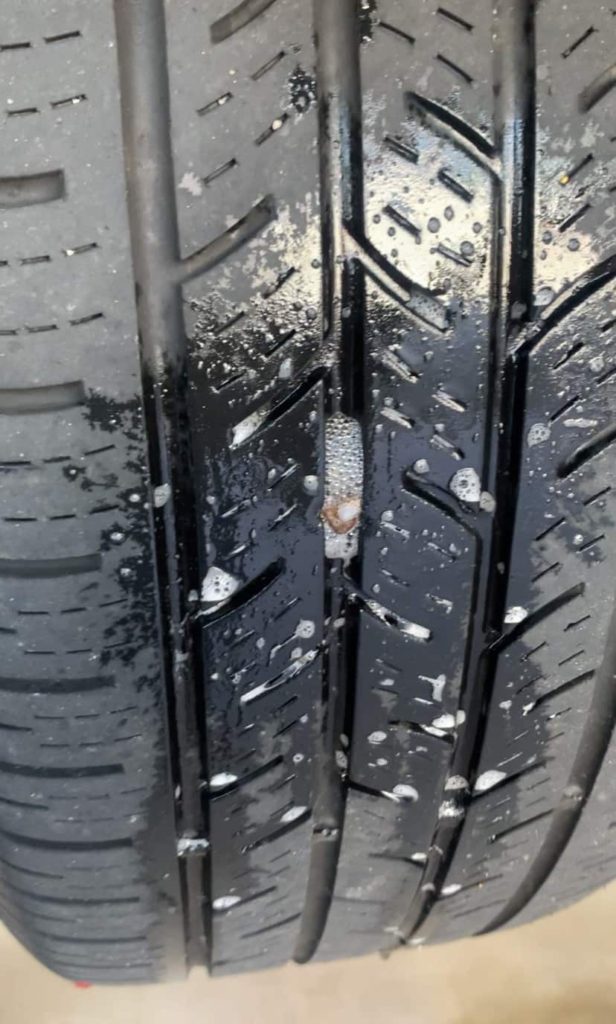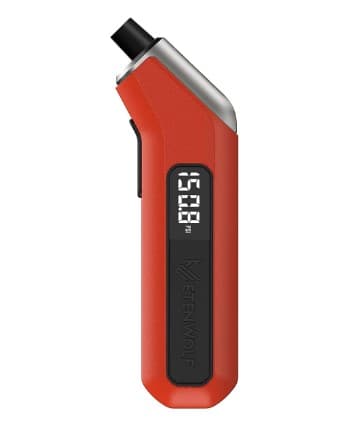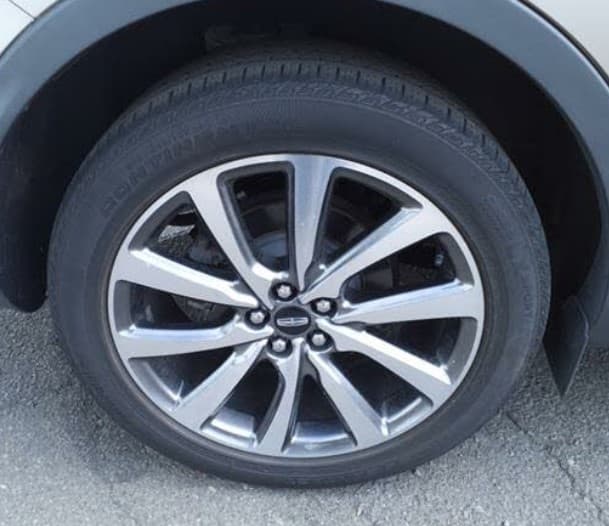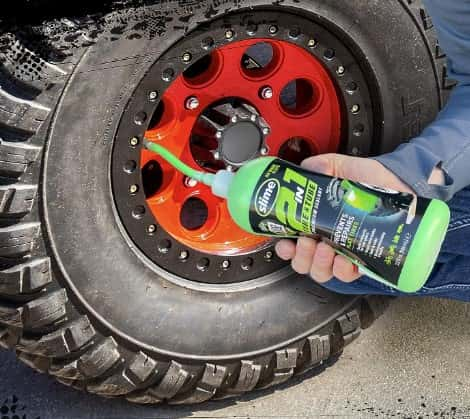What is the Lincoln Nautilus TPMS?
When either the air pressure in the tires is low or the system is malfunctioning, the tire pressure indicator light of the Lincoln Nautilus will illuminate, acting as the final alert from its Tire Pressure Monitoring System (TPMS). The TPMS consists of three primary parts: sensors to measure tire pressure, a receiver module for the TPMS, and the brain of the car called the Engine Control Module (ECM).
How Does the Lincoln Nautilus TPMS Works?
Pressure and Temperature Sensors in Tires: Each tire of the Lincoln Nautilus is equipped with a sensor that is affixed to the valve stem’s base. This sensor, invisible unless the tire is unmounted from the wheel, is responsible for monitoring the tire’s pressure and temperature levels. It’s basically a small electronic assembly comprising a circuit board, a battery, and an antenna, all enclosed in a compact plastic housing.
Data Transmission Protocols: As the Lincoln Nautilus speed surpasses 20 MPH, the sensors begin collecting and wirelessly transmitting data. They use Radio Frequency (RF) transmission and operate on two different frequency bands: 315 Mhz and 433 Mhz.
TPMS Data Receiver: Housed within the SUV is a small microcomputer known as the TPMS receiver module. This unit is responsible for harvesting and interpreting the data sent by each tire’s pressure sensor. Before sending this information to the ECM (main vehicle computer), the module ensures its accuracy and completeness.
Lincoln Nautilus ECM: The Engine Control Module (ECM) serves as the central computer governing the SUV’s performance. It scrutinizes the data from the TPMS receiver to ascertain if the tire pressure and temperature are within safe ranges. If not, it activates a warning indicator on the dashboard.
Tire Pressure Warning: The default warning symbol for low tire pressure appears as a yellow exclamation mark. The Lincoln Nautilus may also display various textual alerts such as “TIRE PRESSURE LOW,” “TIRE PRESSURE MONITOR FAULT,” or “TIRE PRESSURE SENSOR FAULT.” Additional warnings are available for trailer tires if the trailer is equipped with a TPMS system. (Read below to know what each warning messages means)
Diagnostic Functionality: The TPMS system of the Lincoln Nautilus has a built-in self-assessment feature. If a communication problem occurs between any key components like the sensors, the TPMS receiver, or the ECM, the tire pressure warning light will flash briefly and then stay lit until the problem is resolved, indicating a malfunction in the TPMS.
Steps to Reset the Lincoln Nautilus Tire Pressure Light
Park the Lincoln Nautilus on level ground.
Scrutinize each tire to verify that all are visually up to standard.
Check and calibrate the tire pressure to meet the cold pressure guidelines as recommended by Lincoln.
Take the SUV for a quick drive (at least 2 minutes), hitting speeds in excess of 20 MPH.
How to Retrain the Lincoln Nautilus Tire Pressure Sensors
Resetting the Lincoln Nautilus’s tire pressure and retraining its tire pressure sensors are not the same. Retraining tire sensors should be carried out following any tire or wheel service, such as rotations, balancing, or alignments. The main aim of sensor training/retraining is to enable the Nautilus’s ECM to discern the correct placement of each tire on the vehicle, ensuring that it reports the right information to the main display. For example, when the front tires are moved to the rear from a tire rotation, the ECM needs to be reconfigured to acknowledge this new setup.
Power Off Engine: Turn all power to the Lincoln Nautilus OFF.
Electrical On, Engine Off: Quickly hit the start button twice without stepping on the brake or turn the key to the second notch (ACC). Your goal is to have electrical functions active but the engine off.
Flash Hazard Lights: Activate the hazard light switch three times, turning it on and off for a total of six presses. ON-OFF, ON-OFF, ON-OFF.
Activate Reset Mode: Following the first three steps correctly will result in a single horn sound and a notification displaying ” TIRE RESET MODE.”
Front Driver’s Side Tire: Remove the valve cap from the front left tire. (driver side front)
Release Air from Front Driver’s Side Tire: Push in the valve core to let out air until you hear the horn beep, which confirms the tire’s location.
Front Passenger’s Side Tire: Unscrew the valve cap from the front right tire and let air out until the horn beeps.
Rear Passenger’s Side Tire: Go to the rear right tire, remove the valve cap, and continue deflating it until the horn beeps.
Rear Driver’s Side Tire: Finally, make your way to the rear left tire, remove its valve cap, and release air until you hear the horn beep.
Training Done: A message stating “Training Complete” will manifest on the information screen if all steps are followed as intended in the correct order.
Inflate Tires: Pump all tires back up to the specified pressure levels.
Drive: Drive the Lincoln Nautilus for a few minutes, ensuring to reach speeds above 20 mph.
Lincoln Nautilus TPMS Sensor Training Tips
💡 If you do not hear a horn beep after step 3, start the process over again. If you cannot get the car into “training mode” try this: Cycle the power settings multiple times, On-Off, On-Off, drive the Nautilus for a few minutes, and attempt the steps again.
💡 Only retrain the tire pressure sensors in the order we listed above. (LF tire, RF tire, RR tire, LR tire)
💡 If you hear two beeps at anytime following this procedure, we recommend starting the entire sequence over again.
How to Check Current Lincoln Nautilus Tire Pressure
Use the OK button on the right side of the steering wheel
Toggle Up or Down to view current tire pressures.
Lincoln Nautilus Tire Pressure and Wheel Size
TIRE SIZE | FRONT PSI | REAR PSI |
245/60R18 | 33 | 33 |
245/50R20 | 35 | 35 |
265/40R21 | 36 | 36 |
What do the Different Lincoln Nautilus Tire Pressure Warning Messages Mean?
"TIRE PRESSURE LOW"
This notification suggests that one or more tires are not adequately inflated and need to be inflated up to the suggested pressure guidelines.
"TIRE PRESSURE MONITOR FAULT"
This notification points out that the low tire light’s flashing is likely due to a problem or anomaly in the tire pressure monitoring system itself.
"TIE PRESSURE SENSOR FAULT"
This notification reveals that one or more tire pressure sensors are unable to properly link with the TPMS receiver module or ECM.
What Can Trigger the Low Tire Pressure Light in the Lincoln Nautilus?
Underinflated tires
Excessively inflated tires
Tires losing air
Wheel lacking TPMS sensor (for instance, when a spare tire is in use)
Inadequate or compromised TPMS sensor battery
Faulty or damaged TPMS receiver module or ECM
Radio frequency disruption from nearby electronics or cars using similar radio frequency bands
Environmental or elevation variances
Overweight vehicle
Chain-fitted tires
Extensive window tinting
Lincoln Nautilus Tire Pressure Sensor Batteries
Tire pressure sensors in a Lincoln Nautilus, apart from the spare tire, are basically compact electronic circuit boards that have an integrated transmitter/antenna and are fueled by a small silver-oxide battery. All these components are enclosed in a plastic case. Given the unitary construction, you can’t just replace or recharge the dying battery; you’ll need to replace the entire sensor unit and its connected valve stem. Typically, the tire pressure sensors in a Lincoln Nautilus are designed to last from 5 to 10 years, or close to 100,000 miles.
Troubleshooting the Lincoln Nautilus Tire Pressure Alerts
From time to time, the tire pressure indicator on your Lincoln Nautilus may activate, and even after resetting the TPMS or recalibrating the tire pressure sensors, the warning might persist. We understand how aggravating this can be! Below, we’ve detailed 6 potential reasons and their solutions for such occurrences.
SOLUTION 1: IS THERE A TIRE LEAK?
Upon the activation Lincoln Nautilus tire pressure alert, your immediate first step should be finding the reason why. Is there a uniform decrease in air across all tires? This might be attributed to weather fluctuations or general air dissipation. Alternatively, is a single tire showing reduced pressure? Make sure to methodically inspect every wheel and tire on your Nautilus to look for abnormalities and then follow up with these guidelines:
Instead of merely trusting the onboard tire pressure mechanism, manually assess the air pressure across all tires to find any discrepancies.
Use a tire air pump to make air pressure adjustments, and always double-check post inflation to ensure precision.
Drive the Lincoln Nautilus, ensuring a speed of over 20 Mph for a few minutes.
⏩SUMMARY: If, after these measures, the tire pressure alert goes off but reemerges, regardless of how soon or late, it’s indicative of a potential leak in either the tire or wheel. For comprehensive insight into the leak’s origin, kindly refer to solution 6.
SOLUTION 2: HOW TO CLEAR THE LINCOLN NAUTILUS TPMS DIAGNOSTIC TROUBLE CODES
Much like rebooting a computer when it stops working properly, you can reboot the computer system of the Lincoln Nautilus. This vehicle computer, known as the ECM or ECU, continuously logs data relayed by the SUV’s sensors. The ECU/ECM has established parameters for the data from these sensors. A warning light, in the form of a DTC or Diagnostic Trouble Code, illuminates when data deviates from these parameters. An instance of this is the illumination of the low tire pressure alert. Each time a DTC is triggered, it gets stored in the computer’s memory, either as a permanent or temporary DTC. And like PCs which can encounter issues, the ECM might need a restart. To reset your Lincoln Nautilus ECM and wipe out the temporary DTCs, adhere to these instructions:
Adjust the tires to the right cold pressure specifications.
Power off the engine and all auxiliary devices (e.g., lights, radio system).
Unhook the negative terminal connector of the primary 12-volt battery.
Wait briefly.
Reconnect the negative battery terminal connector back on the 12-volt battery.
Drive consistently at 50 Mph for close to 30 minutes to calibrate all the vehicle sensors.
⏩RESPONSE: Once you’ve performed the battery reset on the Lincoln Nautilus, check if the tire pressure indicator deactivates and remains off post-driving. If it reactivates, you might be facing a slow tire puncture or a communication malfunction between a tire pressure sensor and the ECM. Ensure the absence of any tire puncture or wheel leaks before you test the tire sensor in Solution 3.
SOLUTION 3: DIAGNOSING TIRE PRESSURE SENSORS WITH A TPMS PROGRAMMING TOOL
If, after carrying out steps 1 & 2, you’re inclined to think there’s a faulty tire pressure sensor, then utilizing a TPMS programming tool is essential. Personally, the Autel TPMS tools have been my go-to for years.To identify any underperforming tire pressure sensors, use a TPMS programming tool in the following manner:
Connect the programming device to the OBD2 port of the Lincoln Nautilus, found below the steering wheel.
Proceed with the sensor testing as guided by the programming tool. (follow the instructions the TPMS tool gives in the order that it gives them.)
Align the programming tool close to the valve stem on the front left tire and select the “trigger” or “test” function.
Wait a few seconds for the tool to respond.
Replicate the steps for the remaining tires, ensuring you follow the tools instructions.
⏩ CONCLUSION: Post evaluation, the TPMS programming tool will yield a summary detailing the state of each sensor. If any sensor doesn’t communicate with the tool or shows a dwindling or dead battery, that sensor has to be replaced.
SOLUTION 4: REVIVING AN UNRESPONSIVE TIRE PRESSURE SENSOR
At times, tire pressure sensors enter a non-active state, triggering a low tire pressure alert. To revive or stimulate a dormant sensor, pursue the subsequent steps:
Push in the valve stem to release air from the tire with the non-responsive sensor.
Deflate the tire’s pressure by a margin of 15-20 Psi.
Re-pressurize the tire by an overage of 5 Psi. If its advised pressure stands at 36 Psi, momentarily adjust it to 41 Psi.
Drive your Lincoln Nautilus for a brief span, maintaining a velocity above 20 Mph. (Avoid high-speed areas like highways.)
When parked, calibrate the pressure back to its designated value.
⏩ INFORMATION: We recommend using Solution 4 if you are having an issue retraining your Lincoln Nautilus tire pressure sensors. Follow this solution and then reattempt the tire pressure sensor training.
SOLUTION 5: THE LOW TIRE INDICATOR LIGHT SWITCHES ON AND OFF ON ITS OWN
If you live in a place that has sharp temperature drops overnight or where temperatures vary with the changing seasons, it’s not uncommon to see the low tire pressure light activated when you start your Lincoln Nautilus in the morning. However, with the increase of daytime temperatures and the natural warming of the tires as you drive, the tire light tends to shut off on its own. While this behavior is expected, it’s not inevitable.
⏩ RECOMMENDATION: Always make it a habit to measure and set your tire pressures in their cold state. This is best done when the Lincoln Nautilus has been idle for at least 3 hours or has covered a distance of less than a mile. This routine ensures that your tire pressures are set accurately.
SOLUTION 6: FINDING THE TIRE LEAKS ORIGIN
Should you have explored the suggested fixes above and discerned that a tire is deflating, here’s the method to identify the leak’s location. Materials Needed: Water, Dish soap or glass cleaner, spray container, air pump.
Ensure the tire’s air level is at least 35 Psi.
In the spray container, mix water and dish soap to create a solution. A glass cleaner like Windex is a suitable alternative.
Maneuver the Nautilus’s tire for easy accessibility – for a front tire, turn the steering wheel to expose more of the tire’s surface.
Saturate the tire thoroughly using the prepared soapy solution.
Carefully scrutinize the wet tire for minuscule air bubbles surfacing.
⏩ WHAT IT MEANS: Air bubbles forming on the tire surface reveal the exact point of the air leak. Highlight this leakage point using chalk to ensure you can find it later when you repair the tire.
Do Temperature Changes Cause the Lincoln Nautilus Tire Warning Light to Turn On?
Did you know that the Lincoln Nautilus’s tire pressure is intrinsically tied to ambient temperatures? Statistics show that a 10°F change can lead to an alteration of 1-2 psi in tire pressure. This is a very common cause for the low tire pressure light to turn on! This means that in an environment where temperatures dive by 35 degrees from daytime to nighttime, you could witness a shift of around 3.5-7 psi in your tire pressure! This is often enough to illuminate the Lincoln Nautilus tire pressure warning light.
How to Check Lincoln Nautilus Tire Pressure
Reference Point: Identify the Lincoln Nautilus’s cold recommended tire pressure. It’s available on a white or yellow sticker when you open the driver side door.
The Air Pressure Gauge: We suggest using a digital tire pressure gauge because they tend to be the easiest to use and read pressures.
Set the Scene: Wait until the tires have cooled – best after the Nautilus hasn’t been moved for a few hours.
Take the Reading: With the valve cap off, firmly press the gauge to the valve and document the shown pressure.
Make Adjustments: Set the tire pressure with the suggested value by adding or letting out air.
Repeat: Ensure every tire is checked, regardless of what the information display says and don’t forget to put the valve caps back on!
Common Lincoln Nautilus Tire Pressure Questions
Can I Disable the Lincoln Nautilus Tire Pressure Light?
No. Any changes made to the tire pressure system of the Lincoln Nautilus will lead to issues with the low tire pressure light and likely a TPMS malfunction.
TPMS Considerations During Wheel or Tire Replacement
If you’re replacing the tires of your Lincoln Nautilus, the only required service is to retrain the tire pressure sensors. On the other hand, when replacing the wheels or rims, you can either reuse the current tire pressure sensors by swapping them from the old wheels to new wheels, or acquire a new set of sensors, install them onto the new wheels, and then program them to the Nautilus’s ECM by using a TPMS programming device.
Can Tire Pressure Be Influenced by Altitude?
The tire pressure in a Lincoln Nautilus is directly influenced by changes in altitude. With every climb of 1,000 feet above sea level, the surrounding atmospheric pressure lessens by about 3.5%, triggering an increase in tire pressure by nearly 1 Psi. Consequently, if your journey involves an elevation change of 2,500 feet, such as driving up a mountain, expect a tire pressure increase of approximately 2.5 Psi.
Is it Safe to Drive the Lincoln Nautilus With the TPMS light On?
Driving the Lincoln Nautilus with the low tire pressure light active is not recommended. The illumination of the TPMS light indicates an issue, be it from diminished tire pressure or a malfunctioning sensor not syncing with the SUV’s ECM. It’s essential to pinpoint the issue by pausing your drive, visually inspecting the tires, and thoroughly assessing the tire pressures.
Why is the Lincoln Nautilus TPMS Light Flashing?
A flashing tire light on the Lincoln Nautilus indicates a glitch within the tire pressure monitoring system. This situation typically surfaces when there’s an improper communication link between the Nautilus’s TPMS receiver module or its ECM and one or multiple tire pressure sensors. Common scenarios include driving with the spare tire, which doesn’t house a tire pressure sensor, or when a TPMS sensor’s battery is nearing its end or is completely drained. In these cases, it’s advisable to consult Solution 3 provided above.
How Safe are Tire Plugs?
Certainly, using tire plugs is a reliable approach for fixing punctures on the tire tread. Although, they shouldn’t be employed on fully depleted tire treads or on the sidewall of a tire.
Are TPMS Sensors Vulnerable to Damage From Tire Sealants?
Using tire sealants can break the tire pressure sensor and lead to an imbalance tire. It’s advisable to use tire sealants only as a last resort.
Everything in this article is applicable to all Lincoln Nautilus models and versions including the Lincoln Nautilus Black Label, Reserve, and Premiere.
Please note that this blog post contains Amazon affiliate links. This means that if you make a purchase through one of these links, we at TPMSRESET.COM may earn a small commission at no extra cost to you. We only recommend products that we personally use and believe in. Thank you for supporting us.



